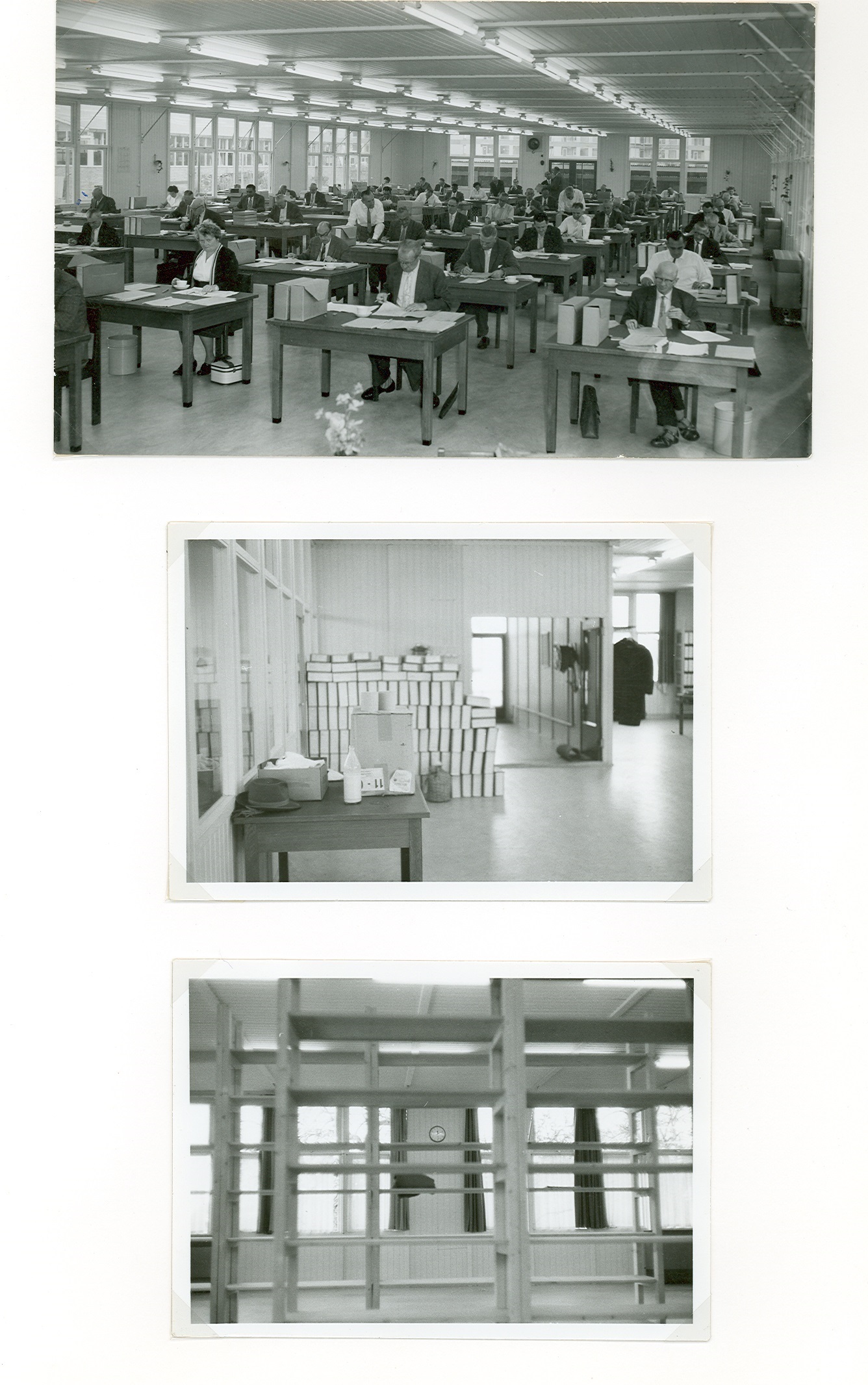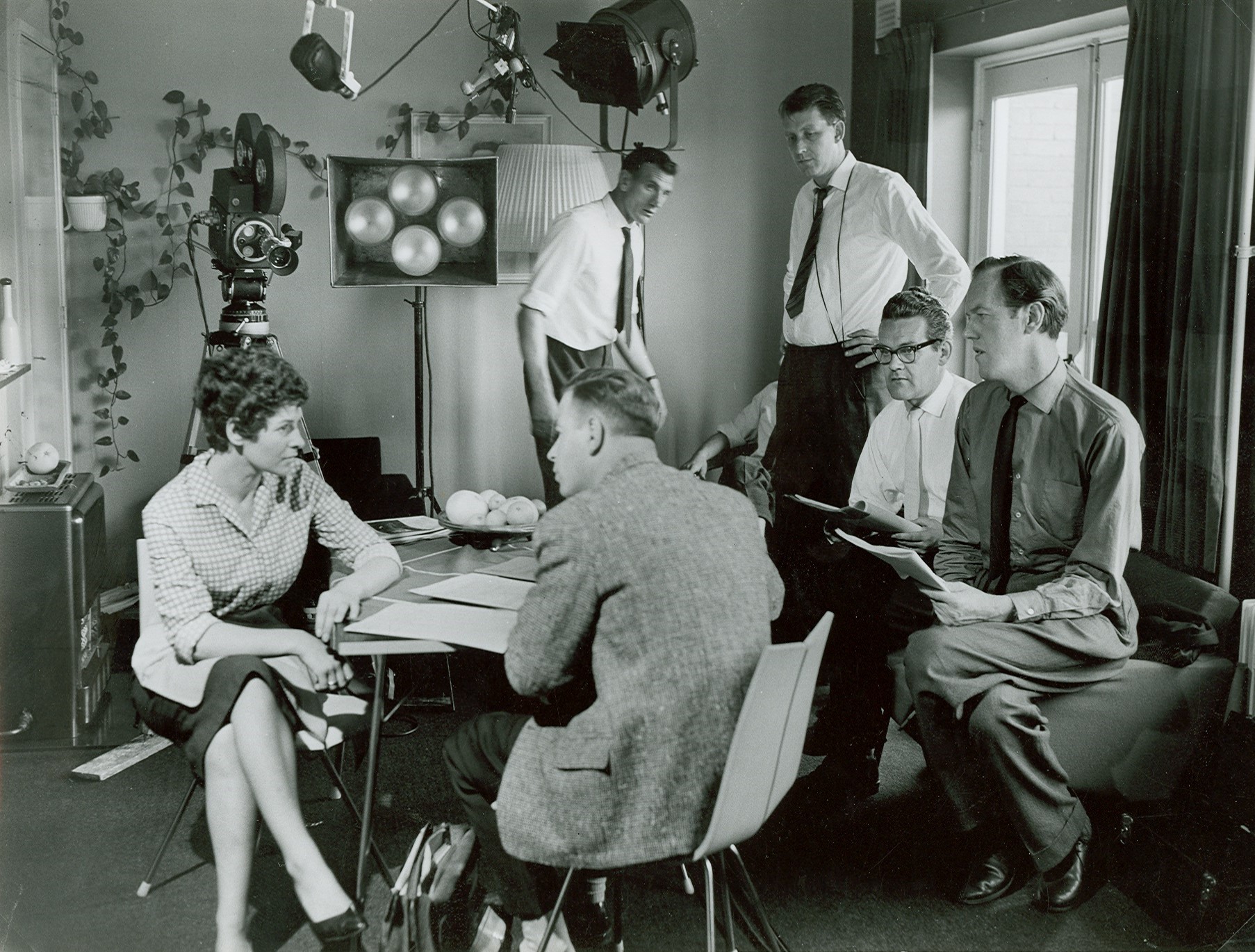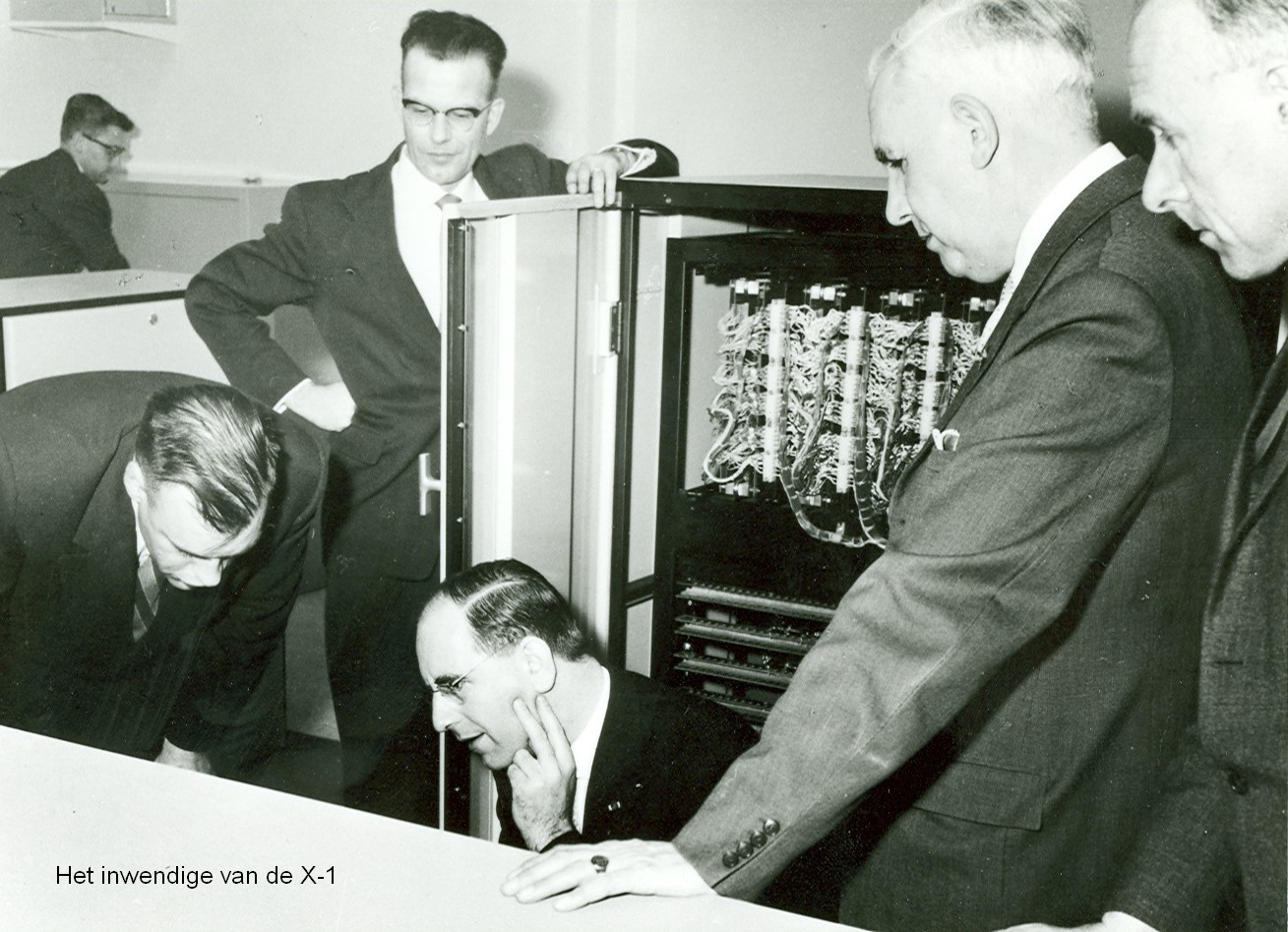1960
In 1960, CBS was growing rapidly and it struggled with staff shortages. The large building on Oostduinlaan had become too crowded: CBS itself had expanded significantly, and staff from other organisations had now also relocated to the building. Government officials moved in when CBS accepted responsibility for the education statistics of the Ministry of Agriculture and Fisheries. The Economic Statistical Office added another 200 civil servants and installed sizeable Hollerith machinery. This resulted in overcrowding of the building, which meant that a hundred staff members had to work in the attic, with poor ventilation and no heating. The pressure only increased in census years with the addition of many more temporary employees who had to be deployed at other locations around the city.
A temporary solution was found in May 1956, when the Apeldoorn branch opened in a new building at Hofdwarsstraat 1, with a punch card room to process that year’s housing census. If a shortage of business space was one reason to expand to another location, the other was the scarcity of ‘punch girls’ in The Hague. It was said that Apeldoorn had 200 ladies who ‘could not wait to become card punchers’ – although none of the women knew what the work entailed – so CBS Director Idenburg had the opportunity to solve two problems at once. Mrs Snoep taught the girls by having them practise tapping to music, causing one person to remark that it sounded ‘as if a battalion of soldiers were marching past’. According to the annual report, the women were of very good quality and there was little staff turnover. The temporary staff were even incorporated into the regular staff, in view of the next census.
Conventional punch card machines
CBS used a computer for the first time in 1960. It was an X1 machine produced by the Dutch computer manufacturer Electrologica, a collaboration between the Mathematical Centre at the University of Amsterdam and the Nillmij insurance company (1956). Idenburg acknowledged the need for the computer in response to the significant increase in the amount of basic material, the different analyses and the recurring problem of finding people to punch the cards. The computer would be used to process the Statistics on International trade; the census itself was conducted in the same way as in 1947, using conventional punch card machines and mark sensing
to perform its established function of collecting data on the current state of the population. Research also continued into the development of inequality in education related to religious affiliation.
Sustained housing crisis
The figures from the 1956 housing census showed that, although the housing crisis had eased somewhat, there was still a serious shortage of homes. Even with so much construction taking place, there was still a shortfall of almost 250,000 homes, around 10% of the existing housing stock. The primary cause was rapid population growth. The first few years after the war saw a baby boom, with couples marrying young and quickly having their first child, and then a second. Young families were forced to live with their parents. Even though there was a housing shortage, there was no immediate large-scale construction after the war, as building materials were scarce and rents had been frozen for a long time. Construction only really began to increase in 1948.
Commuters
One effect of the housing crisis was a daily stream of people leaving their hometowns to get to work. These commuter flows increased by almost 50% between 1947 and 1956, from 300,000 heads of families to 445,000. For 50,000 commuters (12%), the housing crisis was the most pressing reason to commute. Most commuters worked in the Randstad conurbation, with North Holland, South Holland and Utrecht accounting for almost half of total commuter numbers.
Equalising trend
The higher education table was included again, to gain an understanding of what CBS called ‘manpower issues’ and the distribution of the number of academics by religion. The new table showed a trend towards equalisation. The relative numbers of Catholic and Reformed Christian academics had risen much faster than those from smaller faith communities such as Remonstrants and Mennonites. This increase partly reflected relatively significant population growth amongst Catholics and Reformed Christians, but the number of Catholics and Reformed Christians in academia had risen faster than in the population at large as both groups took advantage of their emancipation in higher education.
The CBS researchers also found that different faith traditions chose noticeably different fields of study. Catholics were comparatively more likely to graduate in literature and social sciences (law, economics, sociology), with few Catholic students graduating in the hard sciences or engineering, while non-churchgoing students actually preferred those hard sciences. The CBS researchers saw these different study choices as an expression of differences in the spiritual and cultural climate in which young people were raised: ‘The stability of the patterns suggests that they indicate certain preference structures within the belief systems in question.’ Alongside personal belief systems, there were of course other factors that determined the differences in choice of study, including variation in social structures and the study options within young people’s communities in Tilburg, Nijmegen (for the Catholics) and Amsterdam (for the Reformed Christians, with Amsterdam’s Vrije Universiteit or ‘Free University’).
Sources
- Link StatLine - Population; households and population dynamics (1899-1960)



